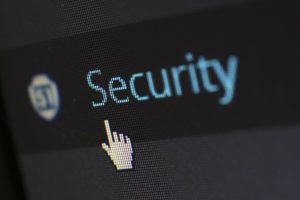People now have hundreds of different online accounts. Whether it’s a social network or an online store, nowadays it seems like we need a separate profile for every service. Creating a strong password is the most crucial part of setting up a new account since it is the only way to keep your data safe from thieves. Unfortunately, many account holders put their data in danger because of careless password creation. In this article, we’ll analyze the most common password mistakes as well as how to avoid them.

Simple Passwords
Simple passwords are often the easiest to crack. Users often use too simplistic passwords that are easy to memorize by muscle memory, such as QWERTY, Name123, Password1234, etc. Solution? Never, ever, under any circumstances, use any of the examples above as a password. You may have seen an increase in mandatory complexity while visiting new websites. Why? Honest businesses are making an effort to safeguard their customers. Use at least eight characters, using a mix of uppercase and lowercase letters, numbers, and special characters. Also, using a password generator can be very helpful if you can’t think of a password alone. Remember that the more characters you use, the safer your password will be.
Repeated or Similar Passwords
Using the same password for many accounts is another typical error people make; ‘password2’ isn’t any more secure than ‘password1’. Consider the possibility that a hacker has gained access to your Facebook account. They will immediately begin trying the broken password (and variations on it) on other websites. In other words, if they can get into just one of your accounts, they can access all of your data. That’s why it’s important to create different passwords for each account you create. Password generators can also be useful tools here, while password managers are helpful for remembering all of your passwords.
Writing Down Passwords
This is, coincidentally, one of the most common blunders. Passwords are often written down on a sticky note or on a phone in order to prevent forgetfulness. If a thief or a spiteful bystander happens to notice it, things will go downhill quickly. When an email server is hacked, all passwords stored there are also at risk. Solution? Again, password manager. This way, you can access anything you need with only one complicated password.
Taking the Bait
Unfortunately, most malicious actors don’t need to put forth a lot of effort to crack passwords. Phishing refers to the methods used to deceive victims into disclosing sensitive information. The most frequent method is to send an email purporting to come from a trustworthy source, such as a website, service, acquaintance, or coworker, and include a malicious link in the body of the message. Either clicking on the link will take you to a phishing site that will steal your personal information, or it will download malware onto your device. Don’t ever give out your password to anyone who asks for it online. No reputable institution would ever ask you to confirm your account details in electronic form. You shouldn’t provide any details about yourself if you weren’t the one who started the conversation.
Passwords are an absolute necessity in the modern digital environment. They are the first line of defense for keeping sensitive data safe from prying eyes. Our efforts will determine how effective that defense will be. However, we all may be making these four standard password errors that make it easier for malicious actors to access our data, so watch out the next time you set your password.













